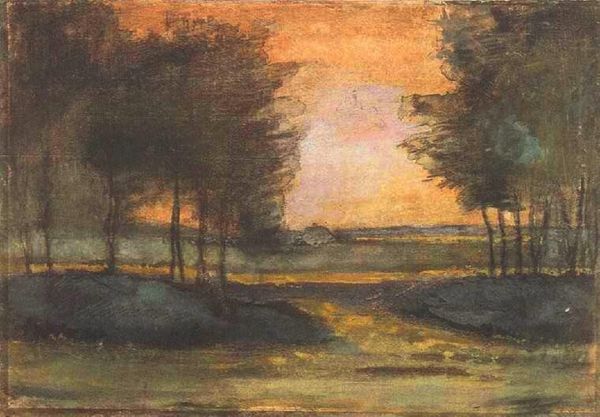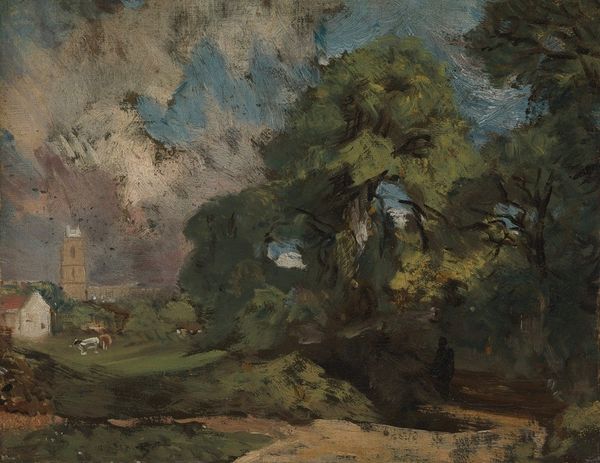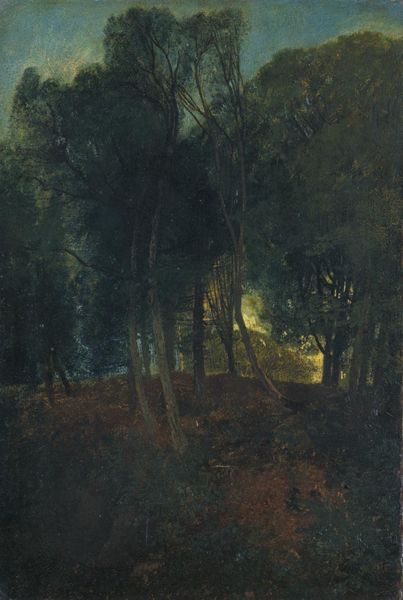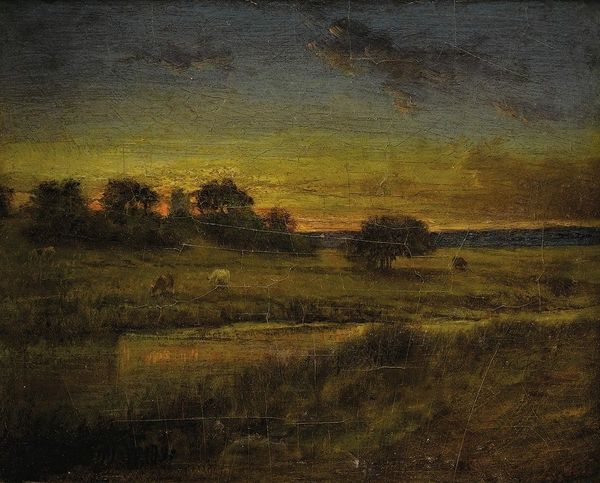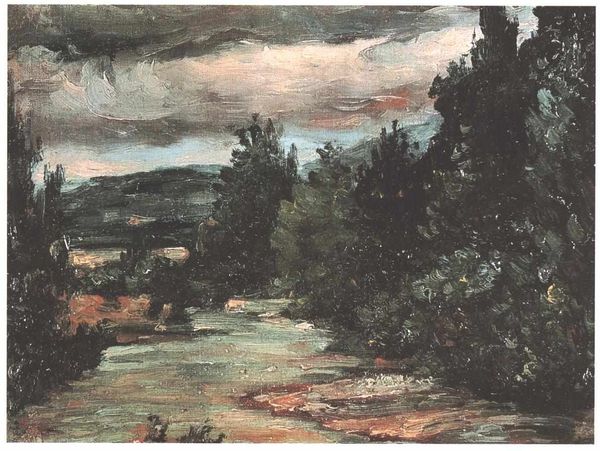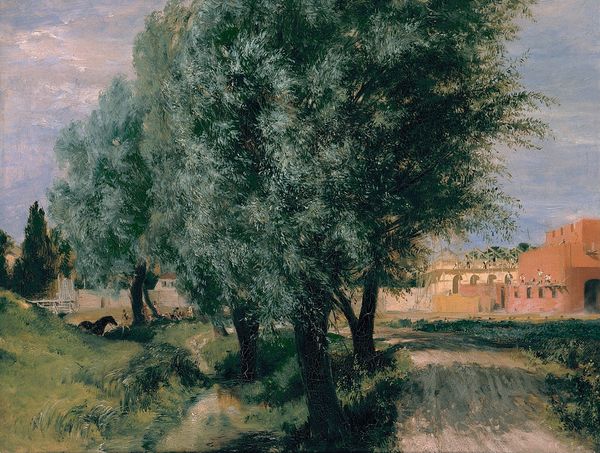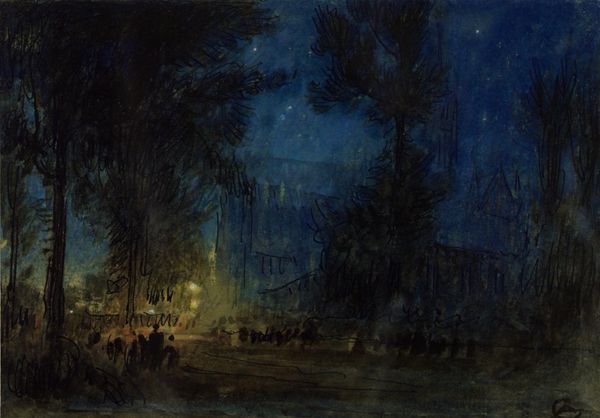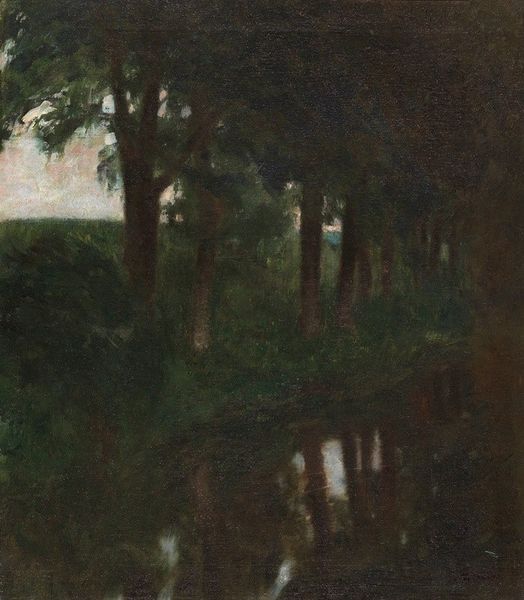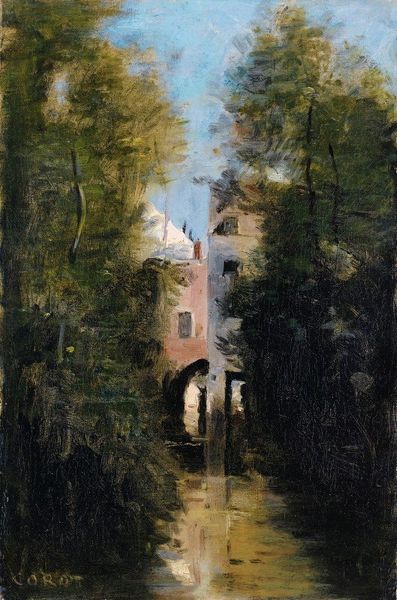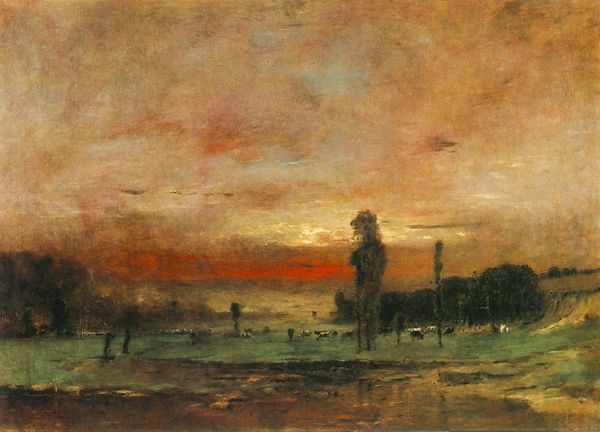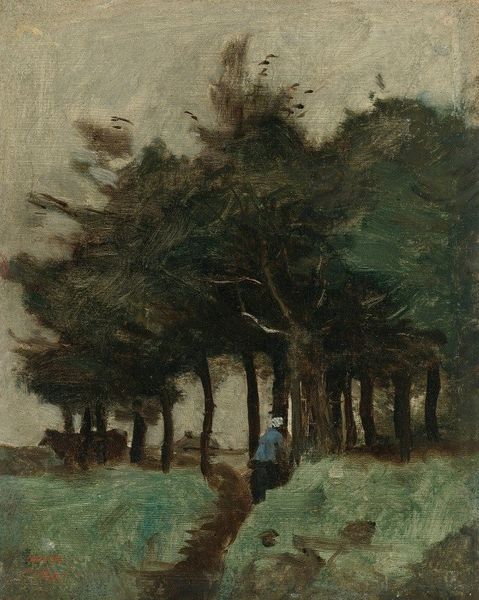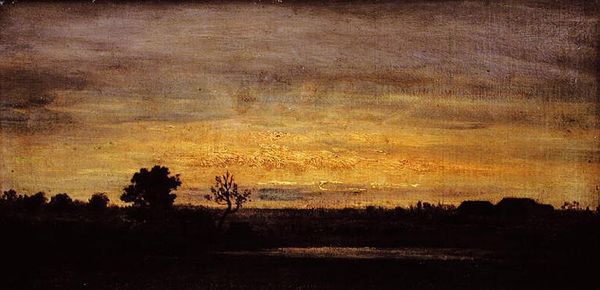
Copyright: Public Domain: Artvee
Curator: Ladislav Mednyánszky's "Blue Landscape," painted in 1875, is a rather intriguing piece of the late Romantic era done in oil paint, en plein air. Editor: Intriguing is one word for it! It's quite somber, isn't it? Almost oppressively so. The dense foreground foliage seems to close in on the distant landscape, like a barrier, and the whole canvas seems dominated by a very heavy mood. Curator: It's true. The painting emerged during a period when Mednyánszky, while painting landscapes, also grappled with deeper themes relating to his evolving social views and connection with nature, which he always imbued with personal sentiment and emotion. Consider the socio-political situation. Editor: So that sense of confinement isn't accidental? I’m drawn to the composition’s symbolic layering: the thicket obscuring the light. I wonder if that's a visual metaphor for suppressed aspirations of freedom from the social changes taking place? Curator: Possibly, especially as Mednyánszky came from a family with aristocratic ties but later developed sympathies toward those outside societal privilege, something that made him an outlier, I think. Editor: And this perspective certainly resonates. The use of dark blues and greens in the foreground seems to eclipse any potential serenity from that glimpse of blue sky beyond the structures in the center. It’s as if nature itself is weighed down, mirroring societal burdens. What did paintings like this do in a gallery setting at the time? Curator: "Blue Landscape" may not have had immediate revolutionary impact on the political scene, but it definitely added nuance to the discussions surrounding social disparity. By contrasting that almost-idyllic distance and that very claustrophobic foreground, it visually underscored societal barriers of the era in ways people recognized—and in an elite world accustomed to seeing picturesque or heroic landscapes. The art forced uncomfortable dialogues and questions, creating social tensions in many circles. Editor: Ultimately, it leaves a potent afterimage; something deeply embedded in the heart, hinting at complex, unspoken narratives from the 19th century, doesn’t it? Curator: Indeed. This artwork remains thought-provoking for those attuned to looking for cultural commentary within artistic movements and representations of nature.
Comments
No comments
Be the first to comment and join the conversation on the ultimate creative platform.
